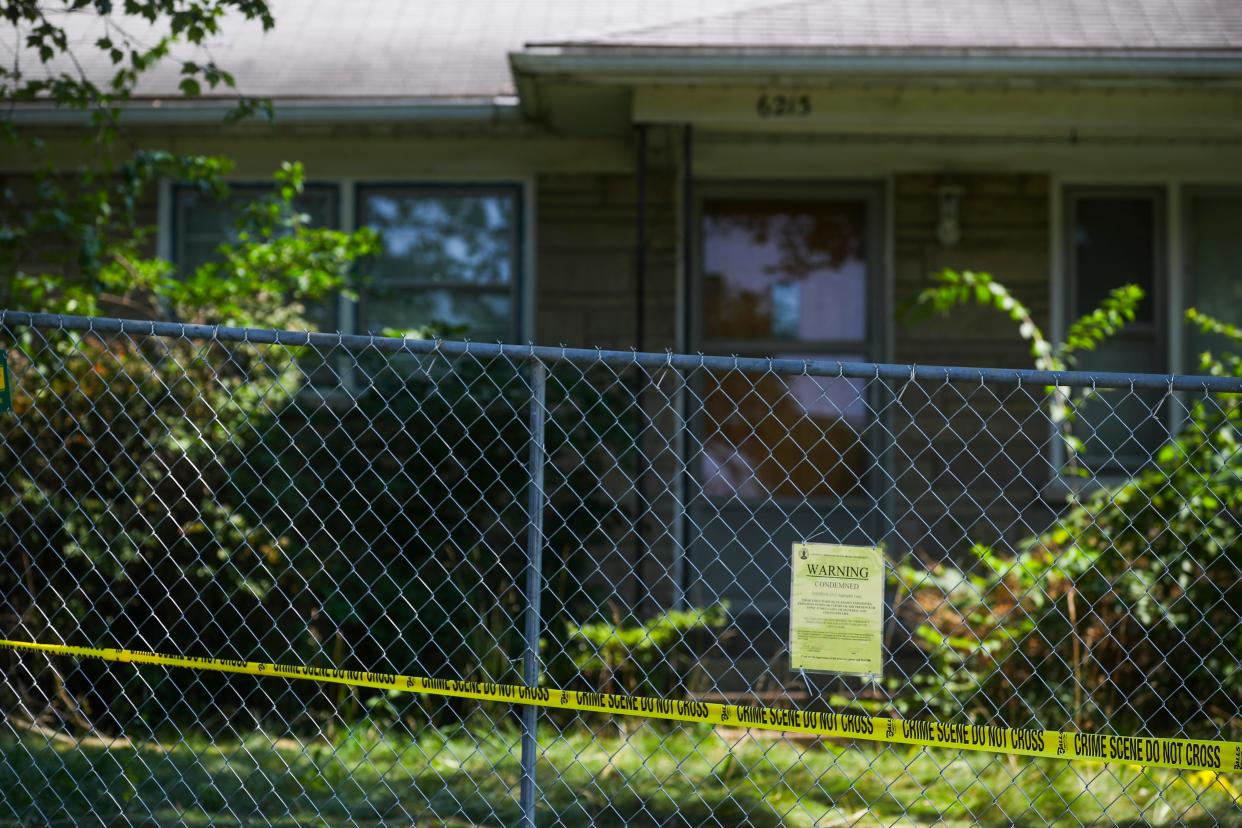City to burn Highview home with chemicals inside. What to know about the air pollution

After finding explosives and hazardous chemicals in a Highview home, experts from all levels of government have determined the only safe way to eliminate the remaining hazards is to burn the property to the ground.
Officials are still planning the controlled burn. In the meantime, the mayor announced a door-to-door canvassing effort in a half-mile radius to help neighbors understand the situation and the potential for evacuations.
A neighborhood meeting will be held Monday at 6:30 p.m. at Highview Baptist Church, 7711 Fegenbush Lane.
The amount of clutter in the "hoarder's house" makes it impossible for officials to safely move in and out to remove volatile chemicals, and similarly prevents access by a robot, Mayor Craig Greenberg told reporters Thursday.
What are the risks of burning down the house of a trained chemist — filled with clutter, volatile chemicals and potentially other undiscovered contents — in a populated, suburban environment?
What chemicals are being burned?
The condemned home contains "picric acid, as well as other explosive materials and industrial grade chemicals," but city officials have declined to comment further on the exact substances discovered.
Based on released photos, mounds of clutter, including industrial-grade chemicals and equipment, are heaped high enough to completely conceal the floor in some parts of the home.
"They know about the picric acid, they know about him making TNT. What else has this guy done?" asked Silverio Caggiano, a retired battalion chief from the Youngstown Fire Department in Ohio with decades of experience advising on hazardous materials.
Officials have indicated uncertainty about substances that could be hidden under the clutter. Asked about his concerns over undiscovered hazardous substances in the home, Mayor Greenberg said: "We're concerned about everything."
"Without a complete inventory of what they've got in there," Caggiano said, "they're rolling the dice."
Will the controlled burn create hazardous air pollution?
While this situation is unique for Louisville's emergency officials, it is not unprecedented nationally.
"Controlled burns like this have been safely done in the past," a statement from the city reads.
In 2010, near San Diego, California, officials decided to incinerate a house filled with chemicals that were too volatile to move, necessitating evacuations.
But even the smoke from a regular house fire contains toxics, as materials like metals, plastics, drywall and household cleaning supplies burn up and release hazardous fumes.
For example, the Highview home was built in 1960, according to a Zillow listing — years before federal legislation banned the use of lead paint in residences. It's not unlikely that a layer of lead paint was applied to some part of the home since its construction, and that lead would be burned into the air from the fire.
And the detonation of remaining weapons in the home could produce hazardous emissions, including "potentially, things like perchlorate, which degrade into dioxins and furans," said Jen Richmond-Bryant, an associate professor at North Carolina State University whose research focuses on spatial analysis of air pollutants and human exposures.
Those chemicals can cause severe health effects, including cancer, if emitted by the burn.
Air monitoring has been conducted inside the home, and will continue before, during and after the controlled burn. The mayor has assured the public that the burn won't happen until safety is guaranteed.
"This is going to be a meticulously planned event carried out by professionals, supervised by experts from multiple fields including hazardous materials, explosives, and public health," Mayor Greenberg said. "It will not happen, and I will not authorize it until we are ready to do this safely."
Where will pollution from the burn travel?
Officials have begun modeling potential plumes from the burn, to determine evacuation procedures and optimal weather conditions.
Caggiano said a one-mile radius evacuation would be prudent, especially if officials aren't sure of exactly what's in the home. The plume, he said, could affect people miles away.
Even if evacuations shield neighbors from the initial plume, hazardous chemicals are likely to remain in the nearby soil.
"Some of that material is bound to deposit into yards," Richmond-Bryant said. After the burn, those deposits leave young children especially vulnerable as they play in yards or exhibit hand-to-mouth behavior outdoors.
Chemicals deposited by the burn smoke could also contaminate herb gardens or crops, she added. The home is a few miles from tributaries to the Salt River, along which some farms operate on the outskirts of the county.
"Depending on which way the wind is blowing, Richmond-Bryant said, "those areas could be impacted."
Connor Giffin is an environmental reporter for The Courier Journal and a corps member with Report for America, a national service program that places journalists in local newsrooms to report on under-covered issues. The program funds up to half of corps members’ salaries, but requires a portion also be raised through local community fundraising. To support local environmental reporting in Kentucky, tax-deductible donations can be made at courier-journal.com/RFA.
Learn more about RFA at reportforamerica.org. Reach Connor directly at cgiffin@gannett.com or on Twitter @byconnorgiffin.
This article originally appeared on Louisville Courier Journal: Louisville plans chemical burn in Highview: What about air pollutants?

